If your summer salads feel like they’re missing something, it might not be flavor—it could be color. Enter edible flowers: the easiest way to turn everyday dishes into something restaurant-worthy. And the best part? You can grow them yourself, starting right now.
Early summer is the perfect time to plant a variety of blooms that not only look beautiful, but taste amazing too. These 19 edible flowers thrive in warm weather, grow quickly, and often attract pollinators while they’re at it. They’re surprisingly low-maintenance, and many will keep blooming all season long, offering a steady supply for your kitchen.
From peppery nasturtiums to sweetly floral violas and citrusy marigolds, each flower on this list brings something unique to the table—literally. Whether you want to garnish a salad, infuse drinks, top cakes, or simply enjoy something new in the garden, these blooms are as versatile as they are eye-catching.
So if you’re looking for a quick and delightful way to upgrade your meals (and your garden), these edible flowers are the perfect place to start. Plant them now, and your plate will be blooming by midsummer.
Nasturtium
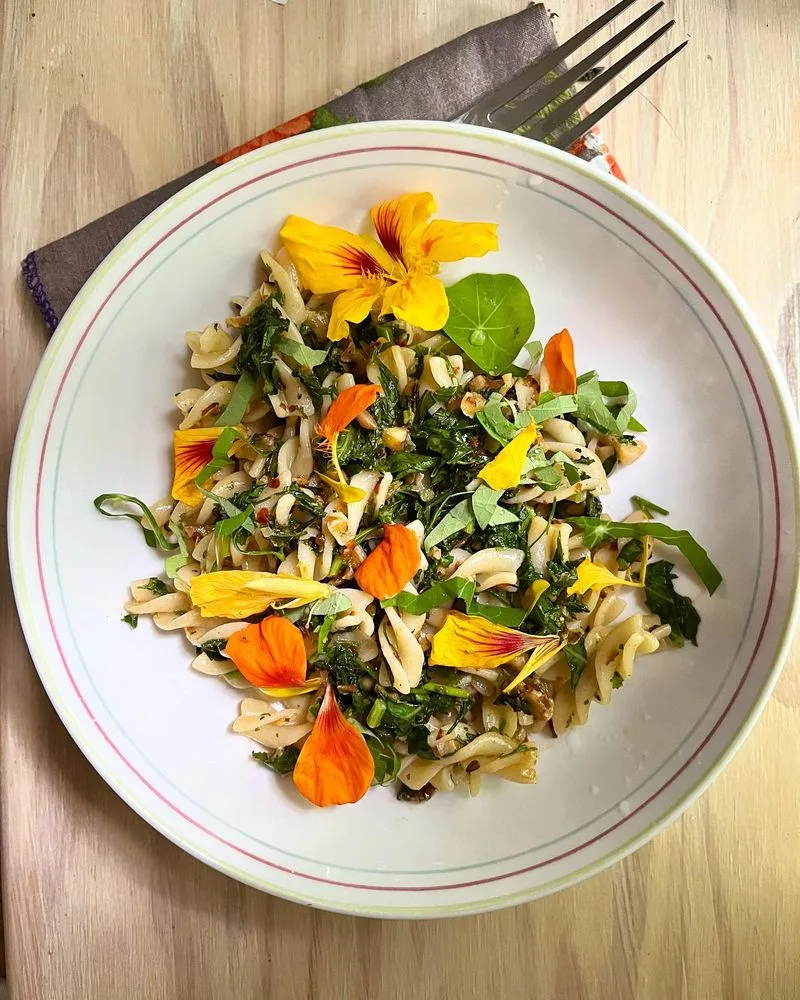
Nasturtiums are a delightful addition to summer salads, offering a peppery kick reminiscent of watercress. With their vivid hues of red, orange, and yellow, they bring a splash of color that can brighten any dish. Known for their easy-to-grow nature, these flowers thrive in sunny spots and well-drained soil. Not only do they add flavor, but their leaves and seeds are also edible. This makes them a versatile choice for creative culinary uses. Incorporating nasturtiums into your garden can elevate your salad game with both aesthetics and taste.
Calendula
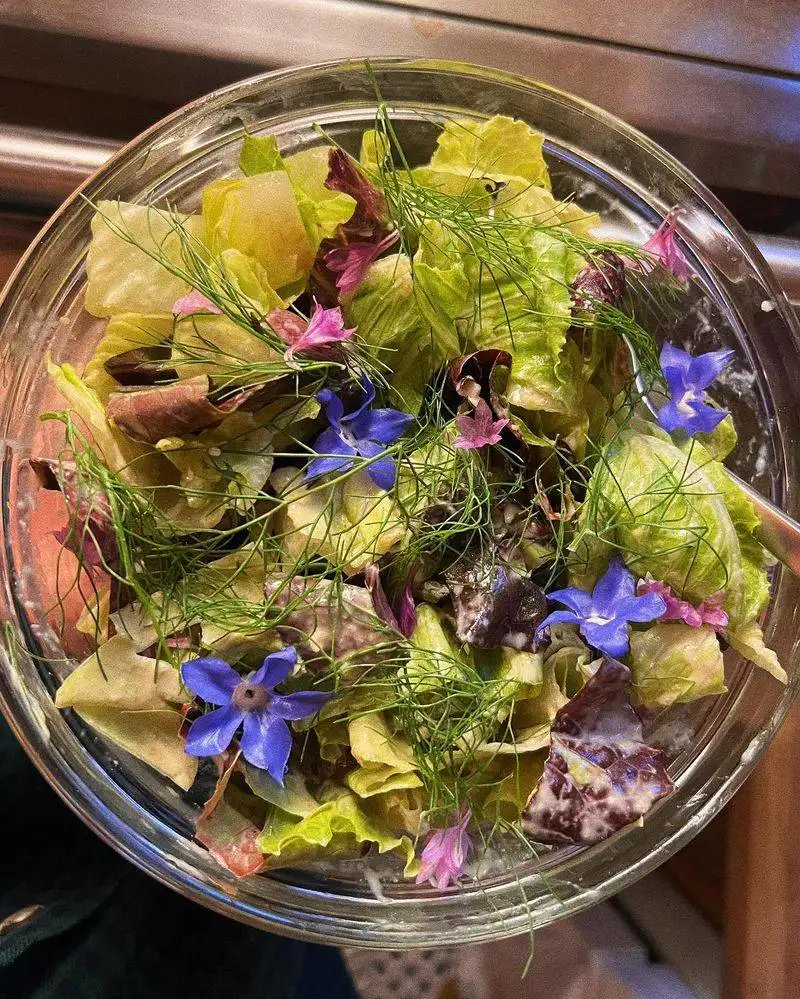
Often referred to as “pot marigold,” calendula flowers are praised for their vibrant orange and yellow petals. These blooms have a slightly spicy, peppery flavor that adds a unique twist to salads. Besides their culinary use, calendula petals are known for their soothing skin properties. Easy to grow and resilient, these flowers flourish in a variety of climates. Planting calendula will not only enhance your dishes but also attract beneficial insects to your garden. Their cheerful appearance and practical uses make them a must-have.
Borage
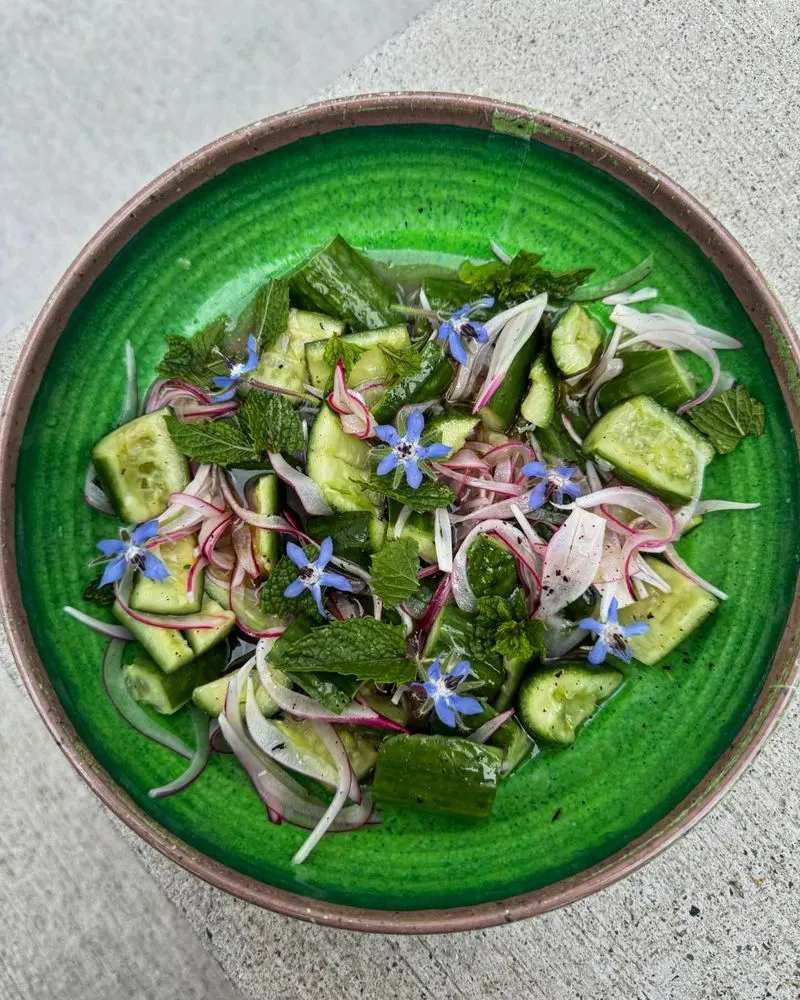
With its striking star-shaped blue blossoms, borage is a standout choice for edible flowers. Known for a taste akin to cucumber, these flowers can refresh your palate and add a cool touch to salads. Borage is also celebrated for its pollinator-friendly nature, attracting bees and other beneficial insects. This plant requires little maintenance, making it a favorite among gardeners. Planting borage can introduce a unique flavor dimension to your salad while supporting your local ecosystem. Its beauty and practicality are hard to resist.
Viola
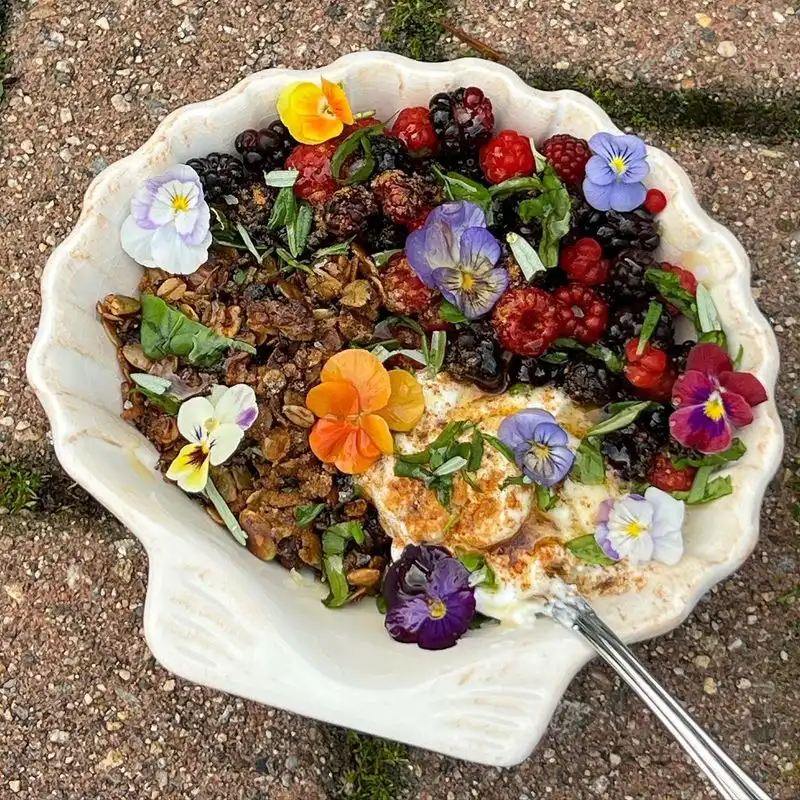
Violas, with their charming appearance, are more than just a pretty face in the garden. These petite flowers offer a mild, sweet flavor that complements a variety of salad greens. Available in a range of colors, from purple to yellow, they can create a vibrant visual feast. Violas are easy to cultivate and flourish in cooler temperatures, making them a versatile choice for different climates. Adding violas to your salads brings not just color and taste, but also a touch of elegance. They are a perfect choice for any table.
Pansy
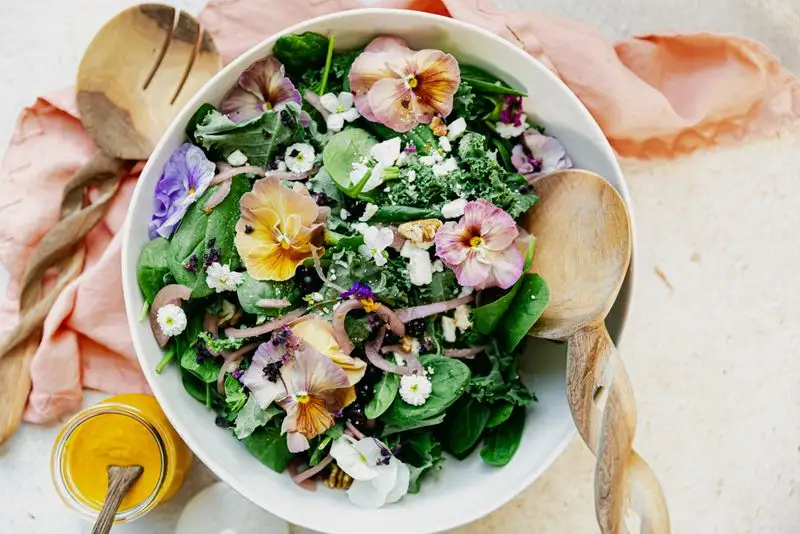
Pansies are known for their striking, face-like markings and come in an array of colors, including purples, blues, and yellows. Their mild, slightly tangy flavor makes them a delightful addition to salads, adding both beauty and taste. Pansies thrive in cooler weather and are relatively easy to grow, making them a gardener’s favorite. These flowers are not only ornamental but also versatile in the kitchen. Including pansies in your garden will ensure a continuous supply of edible decoration for your culinary creations.
Chive Blossoms

The spherical purple blooms of chive blossoms are not just ornamental; they add a mild onion flavor to your salads. These flowers are perfect for those seeking a subtle yet distinct taste in their dishes. Growing chive plants is a breeze, as they require minimal care and thrive in well-drained soil. Besides their culinary uses, chive blossoms can also deter pests in the garden. This makes them both a functional and flavorful addition to your plant collection. They bring taste and utility to your garden and kitchen.
Bee Balm
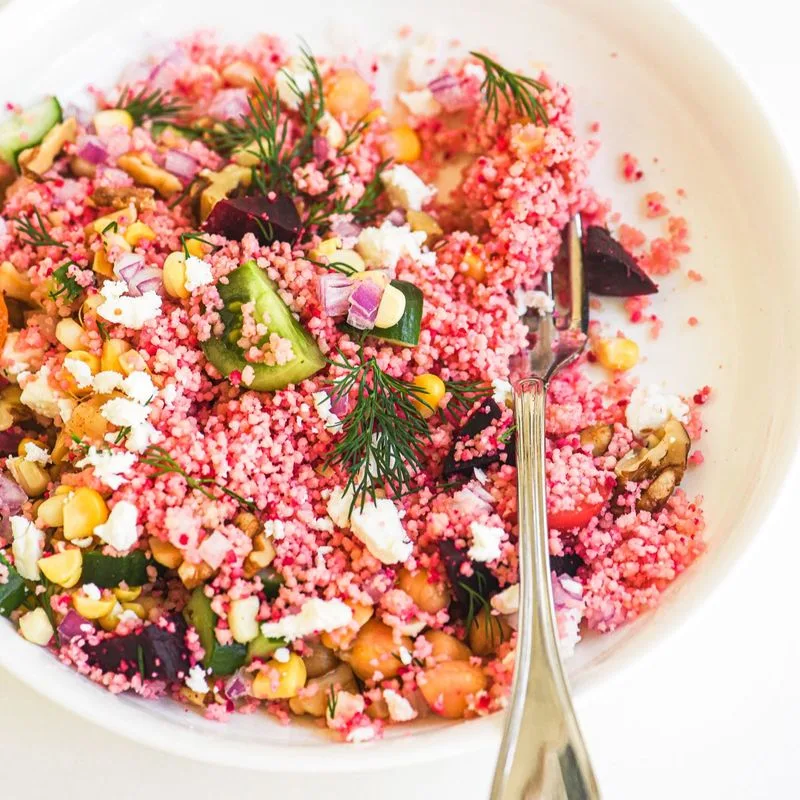
Bee balm, with its vibrant red and pink blooms, is a showstopper in any garden. Its flowers have a minty flavor, adding an aromatic twist to salads. Known for attracting pollinators like bees and butterflies, bee balm supports your garden’s ecosystem. This plant is hardy and can thrive in various soil types, making it a practical choice for gardeners. Incorporating bee balm into your garden will enhance your salads and contribute to a healthy, vibrant outdoor space. It’s both flavorful and beneficial for your garden.
Chamomile
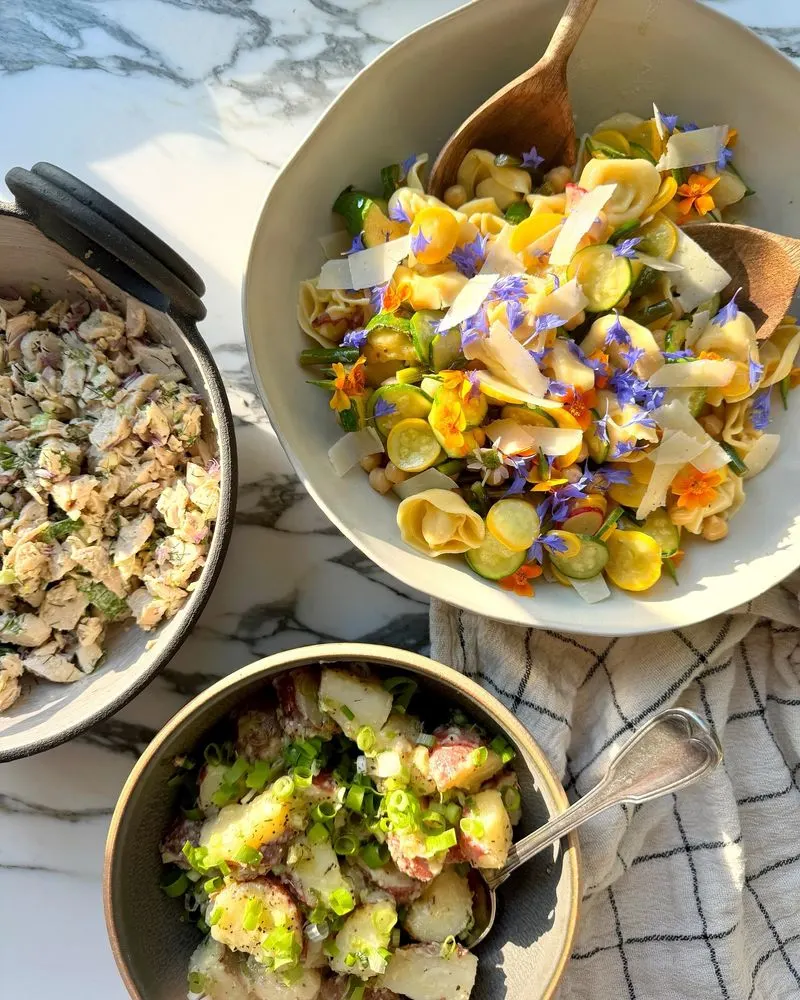
Chamomile is renowned for its calming properties, but its delicate white flowers are also a delightful addition to salads. With a mild apple-like flavor, chamomile brings a subtle sweetness to dishes. This flower thrives in well-drained soil and sunny locations, making it easy to grow. Beyond its culinary uses, chamomile is known for its soothing effects when brewed as a tea. Including chamomile in your garden offers dual benefits for both your palate and your well-being. It’s a gentle yet impactful choice for any gardener.
Lavender

Lavender, with its iconic purple spikes, is not just for fragrance; it can add a unique floral note to salads. Known for its calming scent, lavender’s slightly sweet, citrusy flavor can enhance a range of dishes. This perennial thrives in full sun and well-drained soil, making it a staple in any herb garden. Beyond its culinary appeal, lavender is celebrated for its relaxing qualities and is often used in aromatherapy. Planting lavender will bring beauty, flavor, and tranquility to your garden space.
Hibiscus
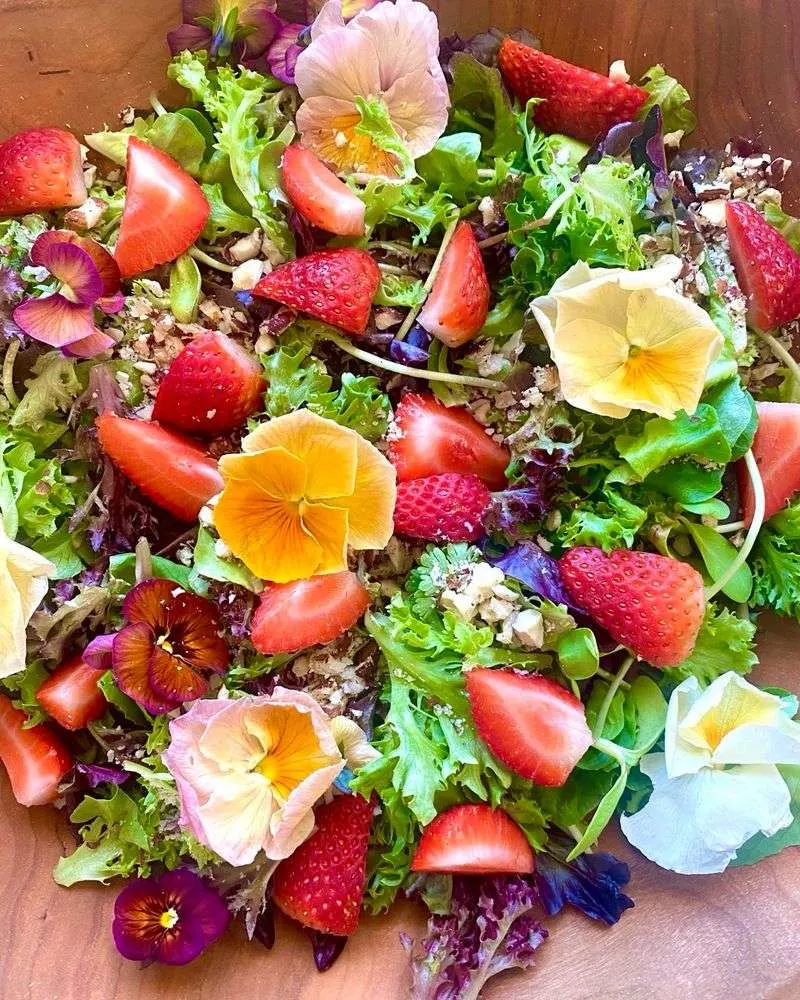
Hibiscus flowers are well-known for their striking beauty and tangy taste, often used in teas and culinary dishes. These large, vibrant blooms can add a refreshing tartness to summer salads. Hibiscus thrives in warm climates and is relatively easy to care for, provided they have enough sunlight and moisture. In addition to their flavor, these flowers offer health benefits, including aiding digestion and lowering blood pressure. Adding hibiscus to your garden will provide both aesthetic appeal and a zesty flavor boost to your meals.
Rose

Roses are more than just symbols of romance; their petals offer a subtle flavor reminiscent of strawberries and green apples. When used sparingly, rose petals can add a delicate aroma and hint of sweetness to salads. Roses prefer well-drained soil and plenty of sunlight, making them a classic yet rewarding garden addition. Beyond their culinary uses, roses are prized for their beauty and fragrance, often used in perfumes and skincare. Planting roses will enrich your garden with elegance and offer a unique twist to your dishes.
Sunflower
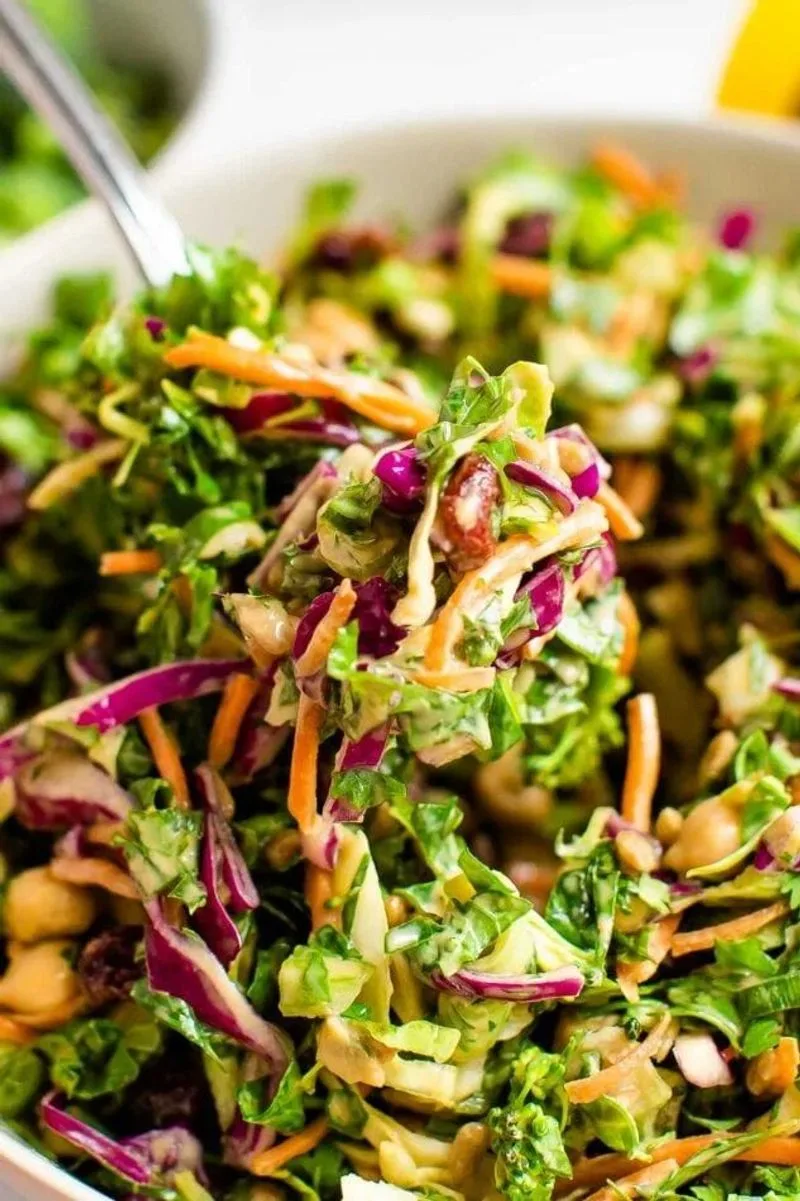
Sunflower petals can add a splash of sunshine to your salads, offering a bittersweet flavor that pairs well with various greens. Known for their towering height and cheerful yellow blooms, sunflowers are not just visually striking but also easy to cultivate. These flowers thrive in sunny locations with well-drained soil, providing seeds that are nutritious and flavorful. Incorporating sunflower petals into your salads will bring a touch of summer vibrancy and a hint of bittersweetness. They are as delightful in the garden as on the plate.
Dandelion
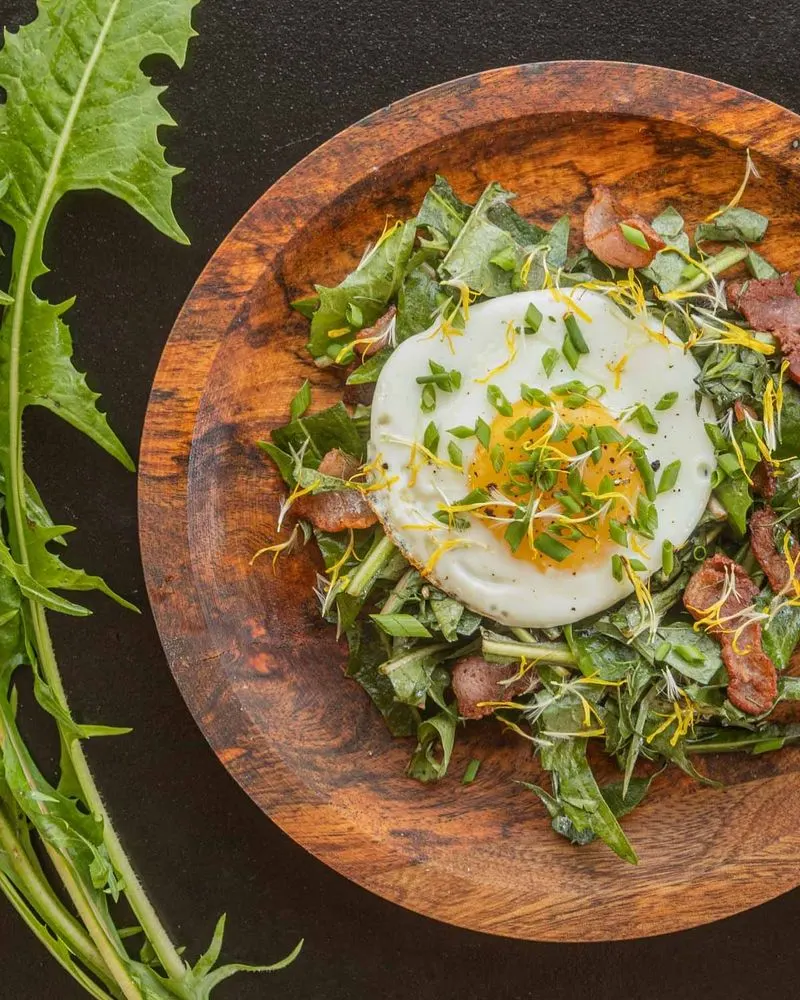
Often overlooked as a mere weed, dandelions offer much more with their bright yellow blossoms that bring a honey-like sweetness to salads. These resilient flowers are easy to grow and flourish in varied conditions, from lawns to meadows. Dandelions are packed with vitamins and minerals, making them a nutritious choice for health-conscious eaters. Beyond their edible appeal, they play an important role in supporting pollinators like bees. Embracing dandelions in your garden provides both nourishment and ecological benefits.
Fennel

Fennel’s delicate yellow flowers offer an anise-like flavor that can add a surprising depth to salads. Known for its feathery leaves and aromatic seeds, fennel is a versatile plant that thrives in full sun and well-drained soil. Beyond its culinary uses, fennel is valued for its digestive benefits and is often used in teas and natural remedies. Growing fennel in your garden can provide a source of flavor, health, and beauty, making it a multifaceted addition. It’s perfect for those looking to enhance their culinary repertoire.
Squash Blossoms
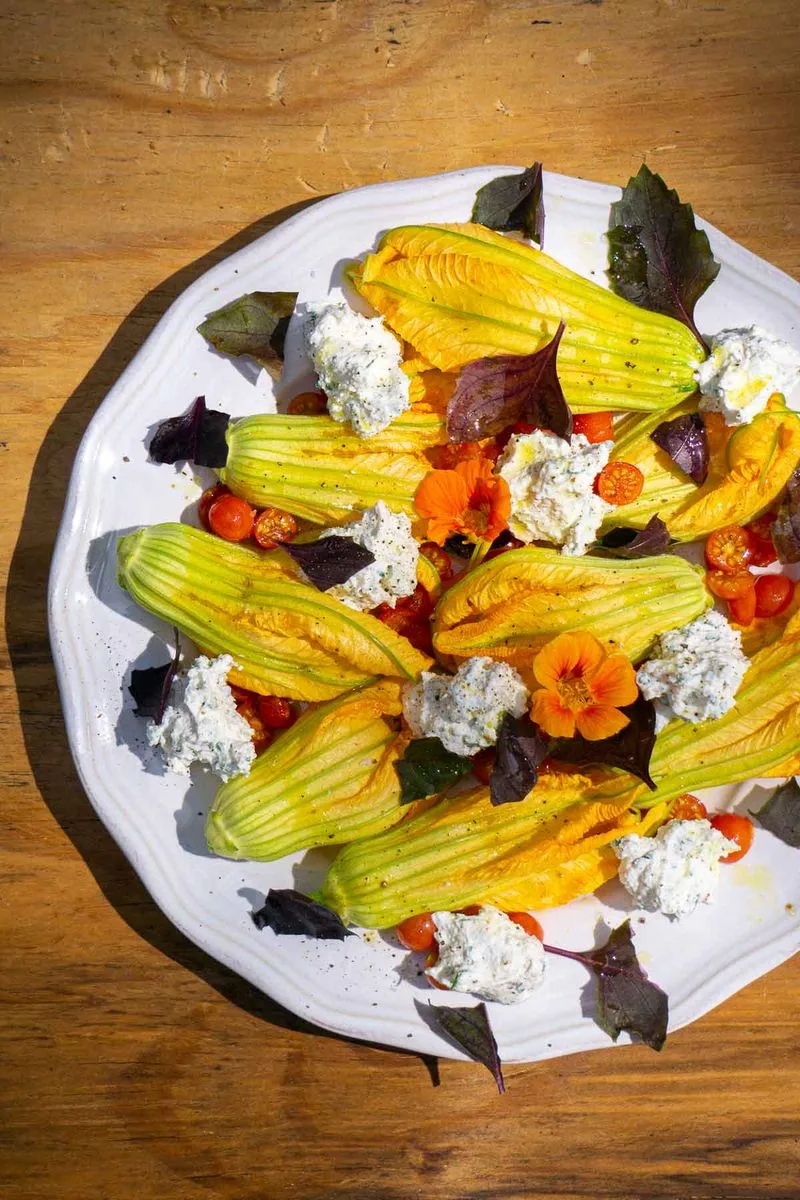
Squash blossoms, with their bright orange petals, are a treat both visually and gastronomically. These flowers have a delicate, slightly sweet flavor that pairs perfectly with salads or can be stuffed for a gourmet dish. Squash plants are generally easy to grow, needing ample sunlight and space to thrive. The blossoms are not only a delicious culinary ingredient but also a symbol of abundance in the garden. Adding squash blossoms to your repertoire can elevate your dishes with their unique taste and vibrant color.
Jasmine
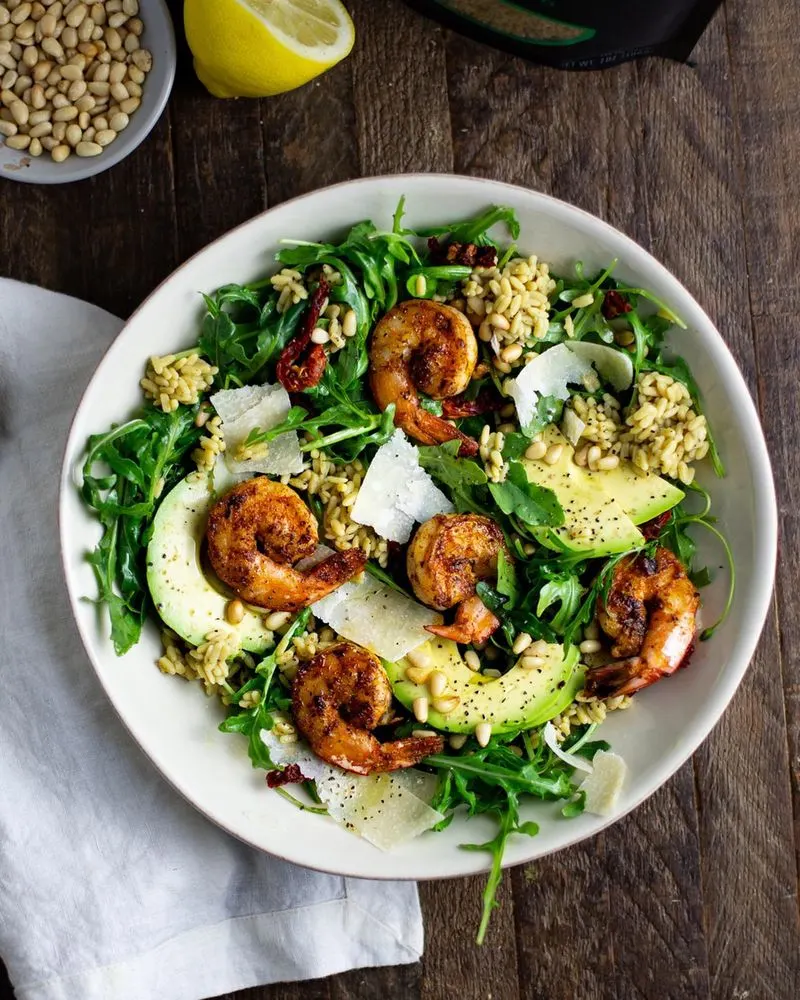
Jasmine flowers, known for their enchanting fragrance, can also introduce a subtle floral flavor to salads. These small, white blooms thrive in warm climates and require well-drained soil and ample sunlight to flourish. Jasmine is not only prized for its aromatic appeal but also for its calming properties when used in teas and essential oils. Incorporating jasmine into your garden and culinary creations offers a sensory experience that delights the senses. Its beauty and aroma make it a treasured addition to any space.
Clover
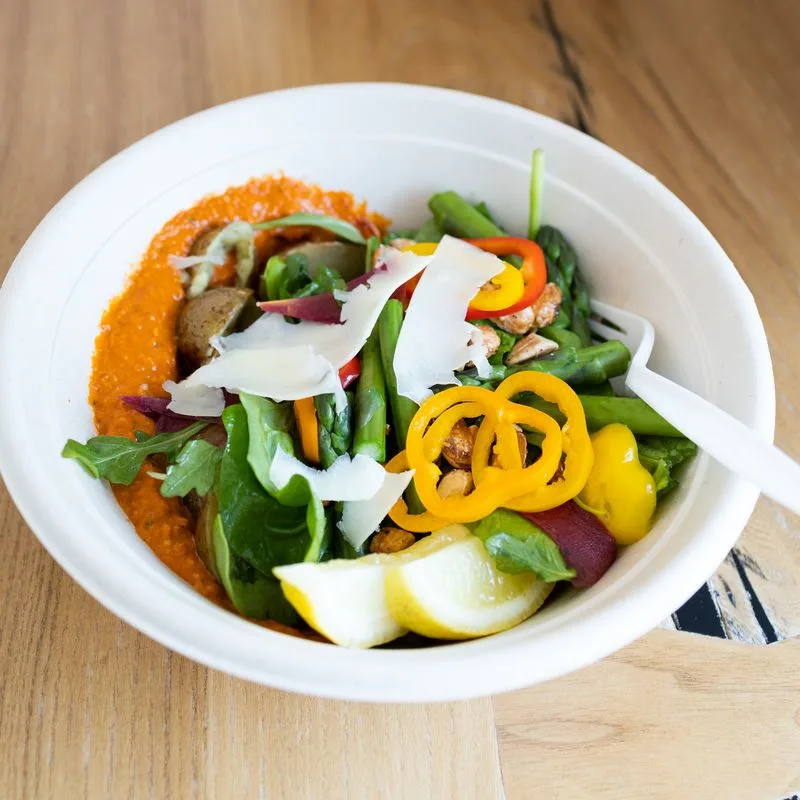
Clover flowers may be small, but they pack a sweet, honey-like flavor that can enhance any salad. These perennial plants are easy to grow and are often found in lawns and wild meadows. Clovers are not only beneficial for your palate but also support soil health by fixing nitrogen, making them an asset to any garden. Including clover in your plantings can provide a sustainable and flavorful option that benefits both your dishes and the environment. Their multifaceted nature makes them a valuable addition.
Mint Blossoms
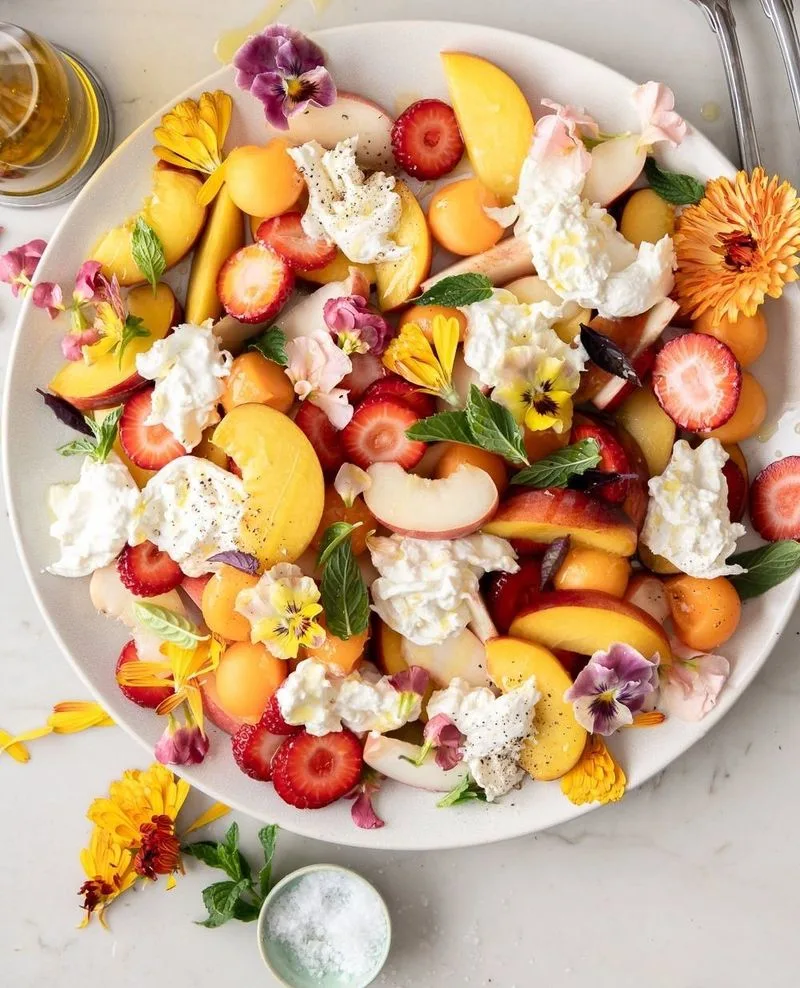
Mint blossoms, with their tiny white or purple flowers, add a refreshing burst of flavor to salads. Known for their cooling properties, these blossoms offer a minty aroma that enhances culinary creations. Mint is a hardy plant that grows well in various conditions, spreading quickly in gardens. Beyond their culinary use, mint blossoms attract pollinators and can be used in teas for their soothing effects. Incorporating mint blossoms into your garden and dishes provides a refreshing and aromatic experience.
Apple Blossoms

Apple blossoms, though often overlooked, offer a delicate floral taste with hints of fruitiness. These blossoms are celebrated for their beauty in spring and can add a unique element to salads. Apple trees thrive in well-drained soil and require proper pruning to flourish. Beyond their edible appeal, apple blossoms herald the arrival of delicious fruits later in the season. By incorporating apple blossoms into your salads, you can enjoy a taste of springtime and a preview of the bounty to come.

